The beginning of the solar system
When we go back in time by 5 billion years, it turns out that there is no sun, no planets and no moons yet. In the place of our Solar System there is only a cloud of gas and dust.
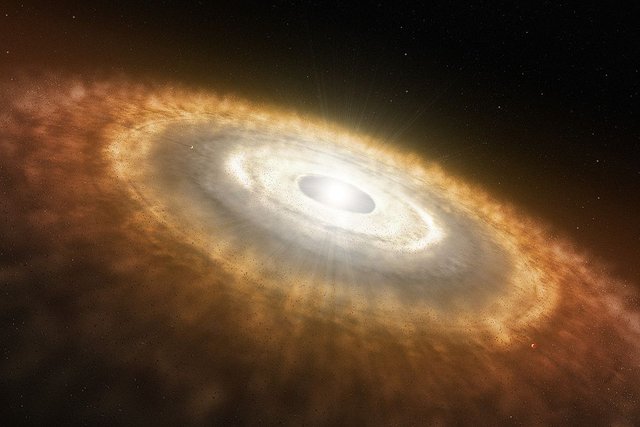
By ESO/L. Calçada link [CC BY 4.0 license]
Our Solar System, as we now know it, consists of many celestial bodies from the immense Sun, through the planets, to the grains of the smallest rocks in the interplanetary space. How did all these bodies come into being? Scientists do not know the unambiguous answer. It is estimated that the Solar System was formed almost 5 billion years ago from a cloud of gas and dust called the primary nebula.
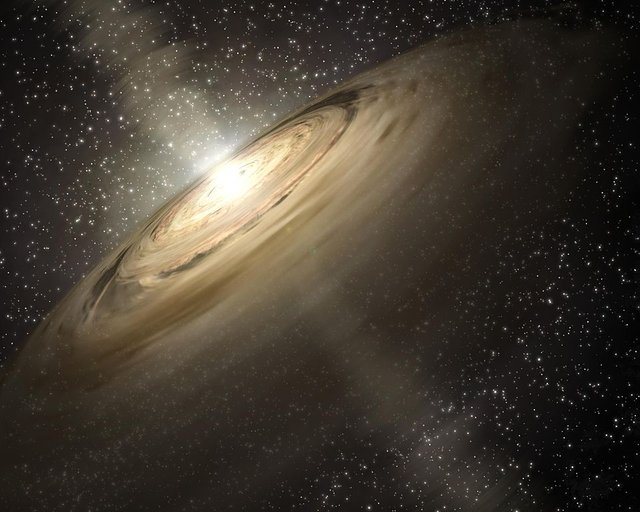
By NASA/JPL-Caltech link [Public domain]
Perhaps as a result of the explosion of a supernova or other kind of gravitational disturbance near this nebula, it leads to its shrinking. Probably due to this action, the nebula also began to whirl, making the cloud of gas and dust begin to take the form of a disk. The central areas of this disk formed a protostar. Around it, matter begins to combine into ever larger fragments that collide with each other and form increasingly larger rock-ice lumps. The sun is born when the temperature inside the protostar reaches 10 million degrees and thermonuclear reactions begin to occur. Due to the enormous temperature and gravity, in the immediate vicinity of the Sun the space is cleared of dust and gas. At the center of the disk, a star appears, around which rock-ice lumps, dusts and gases are swirling. Over time, protoplanets began to form from them. The proof of this formation of planets is their layered structure, suggesting a gradual increase in mass and volume from the densest nucleus to the crust. In the same way, satellites of planets and larger asteroids are also formed.
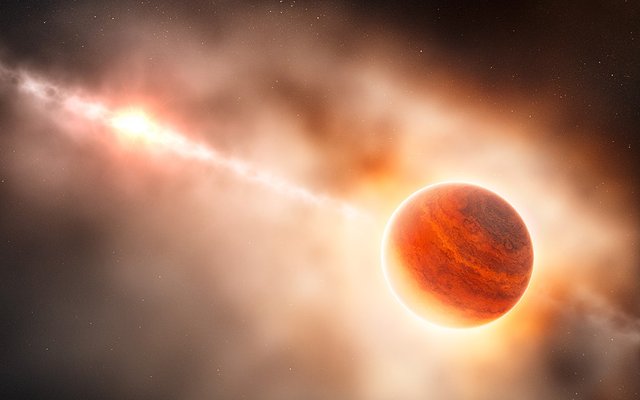
By ESO/L. Calçada link [CC BY 2.0 license]
For the first billion years since its inception, the Solar System has been a place of continuous cosmic collisions. Constant bombardment of planets and satellites caused by a huge amount of cosmic debris moving on unregulated orbits. The farther from the Sun the lower temperature prevails, so the initial landing of a given planet affects what kind of planet it has become. Near the Sun it was too warm for gas planets to be created. In turn, at the edge of the Solar System it was very cold, so many of the resulting bodies have in their composition a percentage of ice. After the creation of the Sun, our system became more and more purified over time. It contains comets, asteroids and their fragments called meteoroids. The space debris created a belt between the orbits of Mars and Jupiter. With time, the dynamic solar system calmed down and was more transparent.
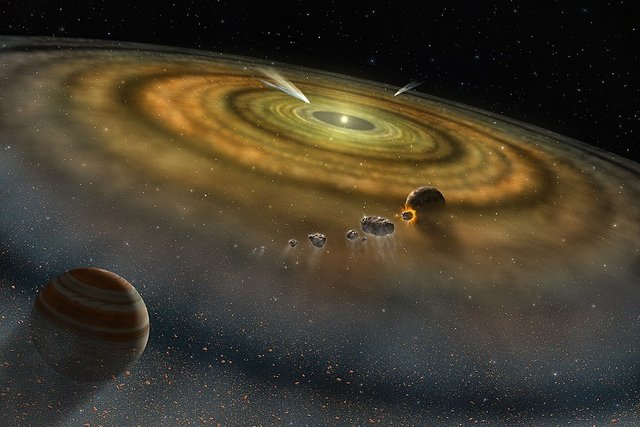
By NASA link [Public domain]
The bodies orbiting the Sun move in elliptical orbits. The ellipse has two opposite focal points at the same distance from its centre. Our star is always in one of these focal points, which is why the surrounding body passes through two extreme points of the orbit: the closest to the Sun, i.e. the peryhelium and the most distant from the Sun, i.e. the aphelium. Apart from comets, all celestial bodies in our Solar System circle the Sun in the same direction as the Earth, i.e. counter-clockwise. Most planets rotate around their own axis in the same direction. The orbits of most planets lie on a single plane called an ecliptic. It runs along the equator of the Sun.
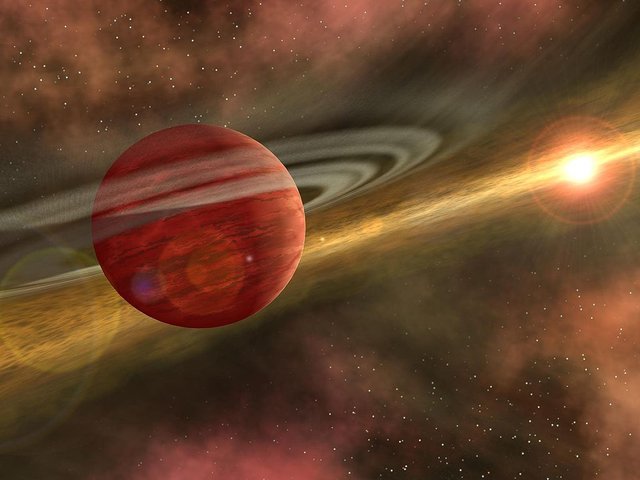
By NASA/JPL-Caltech link [Public domain]
The planets were divided into two groups due to their construction. Mercury, Venus, Earth and Mars are called terrestrial planets because of their rocky structure. Jupiter, Saturn, Uranus and Neptune are gas planets called jupiter planets. The mass of these gas giants is at least 10 times greater than the mass of the Earth. Scale and ice Pluto, considered to be a dwarf planet, doesn't belong to any of these groups.

By Tablizer link [CC BY-SA 3.0 license]
This is how the Solar System, as we know it today, was created. The end of the Solar System will come with the death of the Sun and the complete extinction of its remains, the White Dwarf. Life on Earth will end much earlier, because when the Sun begins to exhaust its fuel, it will become a Red Giant and will grow to such an extent that it will consume Mercury, Venus and the Earth. According to currently known data on the speed of sun fuel combustion, this will happen in about 5.5 billion years.
Greetings to lovers of Astronomy!
References:
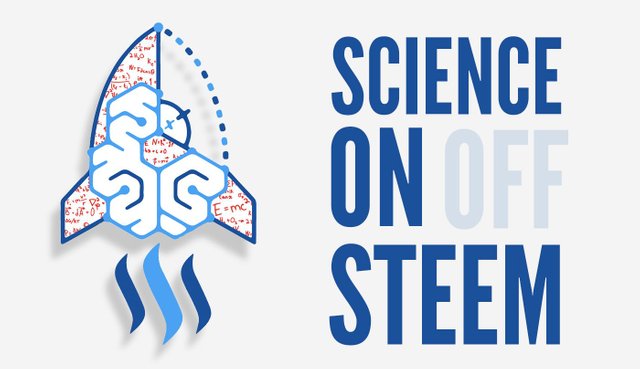
Congratulations! Your post has been selected as a daily Steemit truffle! It is listed on rank 9 of all contributions awarded today. You can find the TOP DAILY TRUFFLE PICKS HERE.
I upvoted your contribution because to my mind your post is at least 4 SBD worth and should receive 133 votes. It's now up to the lovely Steemit community to make this come true.
I am
TrufflePig, an Artificial Intelligence Bot that helps minnows and content curators using Machine Learning. If you are curious how I select content, you can find an explanation here!Have a nice day and sincerely yours,

TrufflePig